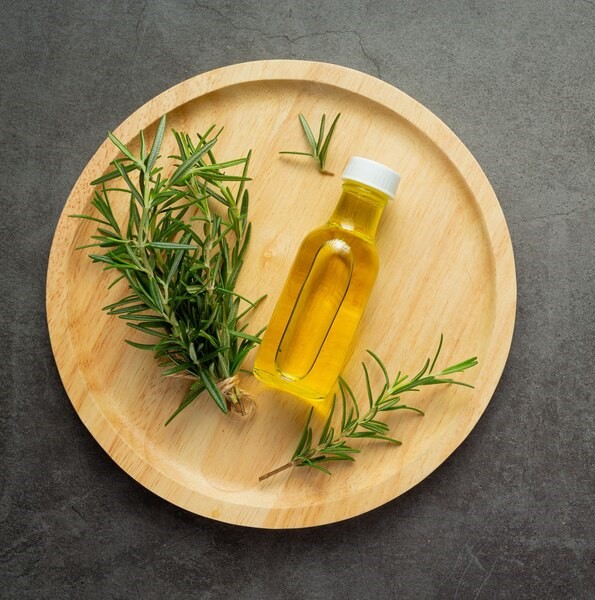Sage, commonly known as rosemary, is a shrub with fragrant, evergreen, needle-like leaves and white, pink, purple, or blue flowers that is native to the Mediterranean.
This plant has a fibrous root system.
Rosemary is a fragrant, evergreen shrub with hemlock needle-like leaves. It is native to the Mediterranean region, but is relatively hardy in cool climates.
This plant is a substance that adds aromatic flavor to foods. Some people claim that rosemary can help reduce muscle pain, boost the immune system, and improve memory. However, it can interact with some medications.
Not only does this herb taste great in dishes like rosemary chicken and lamb, it’s also a good source of iron, calcium, and vitamin B-6.

Phytochemical studies showed that rosemary contains terpenoids, essential oils, alkaloids and flavonoids. Chemical analysis of different types of rosemary extract composition shows that the strongest active compounds of triterpenes, phenolic diterpenes and phenolic acids include rosmarinic acid, carnosic acid, rosmanol, carnosol, ursolic acid and betulinic acid.
Usage
Aside from its usage in the fragrance industry, Rosemary is not only used as a decorative plant in gardens, but also cultivated for practical applications, such as medicine and cooking. When the plant is fully grown, the leaves, twigs, and flowering apices are often extracted for use in these areas.The leaves are used to flavor various foods, such as stuffing and roasted meats
Cultivation of rosemary
Because rosemary is attractive and drought tolerant, it is used as an ornamental plant in gardens and landscaping, especially in areas with a Mediterranean climate. It is considered easy to grow and resistant to pests.
The benefits of rosemary

- Help to treat digestive diseases
- It is useful for the lungs
- cold medicines
- Nerve strengthening
- Detoxification of patients
- Storage memory
- Improve blood circulation
- Boosting the immune system
- Anticancer
- Treatment of gum diseases
- To treat arthritis pain
- Protection against macular degeneration
- Reducing stress
- Strengthening the body’s immune system
- In improving digestion
- Treatment of scalp problems
- To promote hair growth
- For the effective treatment of skin acne
Complications and disadvantages

Excessive use of medicinal plants may cause side effects such as vomiting, exposure to the sun and redness of the skin.
When used on the skin: This plant’s oil is generally safe for most people. But sometimes it may cause an allergic reaction in some people.
The most common use of rosemary
The most common uses of this plant are:
- Rosemary ointment : These ointments act as a reliever for muscle and joint pain and nerve pain (neuralgia).
- Rosemary oil : to improve skin health. It has a soothing effect and is effective for pain relief
- Rosemary plant : It is a medicinal and aromatic plant that is used in tea or food.
- Rosemary drops : It is used to treat hair loss on the head and eyebrows and to treat dandruff.
- Dry Rosemary : The leaves are used in food, drink and medicinal purposes. It has properties similar to fresh rosemary.
Rosemary nutritional value table
| Rosemary nutrition table, fresh natural state | |
| The main constituent | Amount per 100 grams |
| energy (calories) | 131 kilocalories |
| carbohydrate | 20.70 grams |
| Protein | 3.31 grams |
| fat | 5.86 grams |
| Water | 67.77 grams |
| fiber | 14.10 grams |
| sugar Loaf | 0.00 grams |
| Cholesterol | 0.00 mg |
| vitamins | |
| The name of the vitamin | Amount per 100 grams |
| Vitamin A | 146.00 micrograms |
| Vitamin D | 0.00 µg |
| Vitamin E | 0.00 mg gm |
| Vitamin K | 0.00 µg |
| Vitamin C | 21.80 mg g |
| Thiamine (B1) | 0.04 mg g |
| Riboflavin (B2) | 0.15 mg g |
| Niacin (B3) | 0.91 mg g |
| Choline (B4) | 0.00 mg |
| pantothenic acid (B5) | 0.80 mg g |
| Vitamin B6 | 0.34 mg g |
| Folate (B9) | 109.00 micrograms |
| Vitamin B12 | 0.00 mg gm |
| minerals | |
| The name of the mineral | Amount per 100 grams |
| Calcium | 317.00 mg g |
| iron | 6.65 mg g |
| magnesium | 91.0 mg g |
| phosphorus | 66.00 mg gm |
| potassium | 668.00 mg gm |
| sodium | 26.00 mg gm |
| Roy | 0.93 mg g |
| copper | 0.30 mg g |
| Manganese | 0.96 mg g |
| selenium | 0.00 µg |
The products we offer are:
Dates Cube : link
Dried White Mulberry : link
Green Dried Grapes (Raisins) : link
Licorice Root : link









Hello, Neat post. There’s a problem along with your web site in web explorer, might check this?K IE nonetheless is the market chief and a large element of other folks will omit your excellent writing because of this problem.
You have brought up a very wonderful details, thanks for the post.
Can you be more specific about the content of your article? After reading it, I still have some doubts. Hope you can help me.